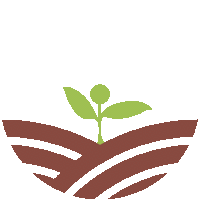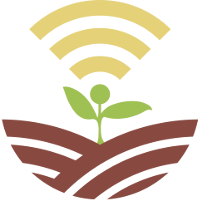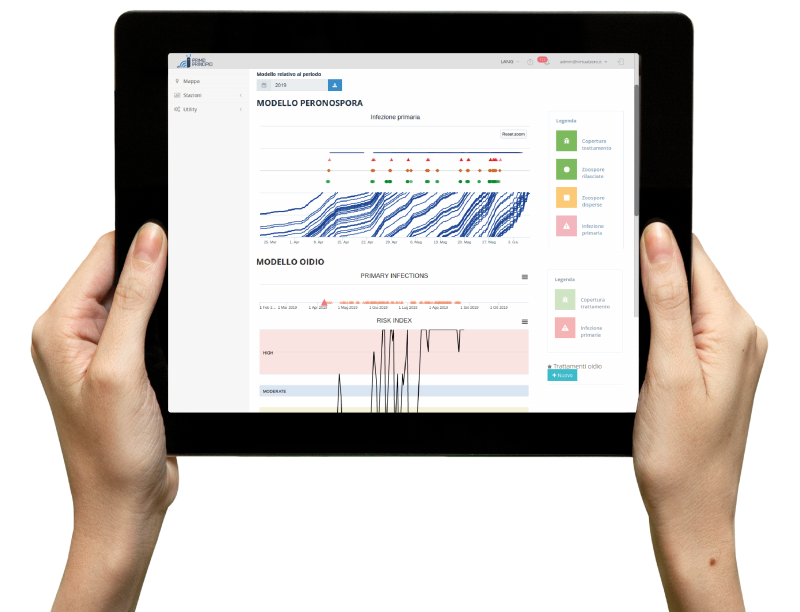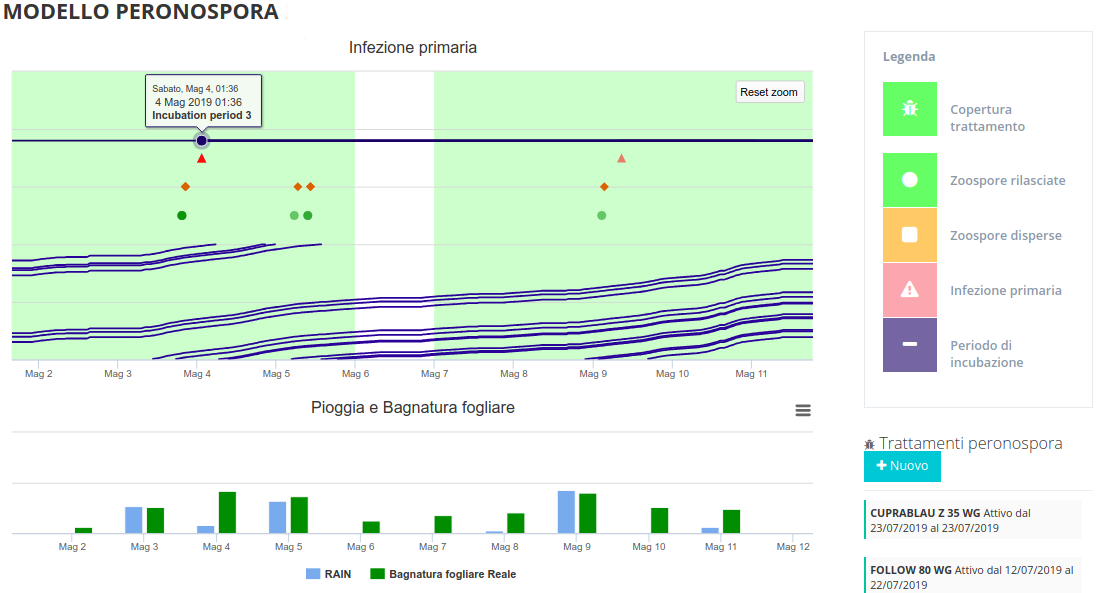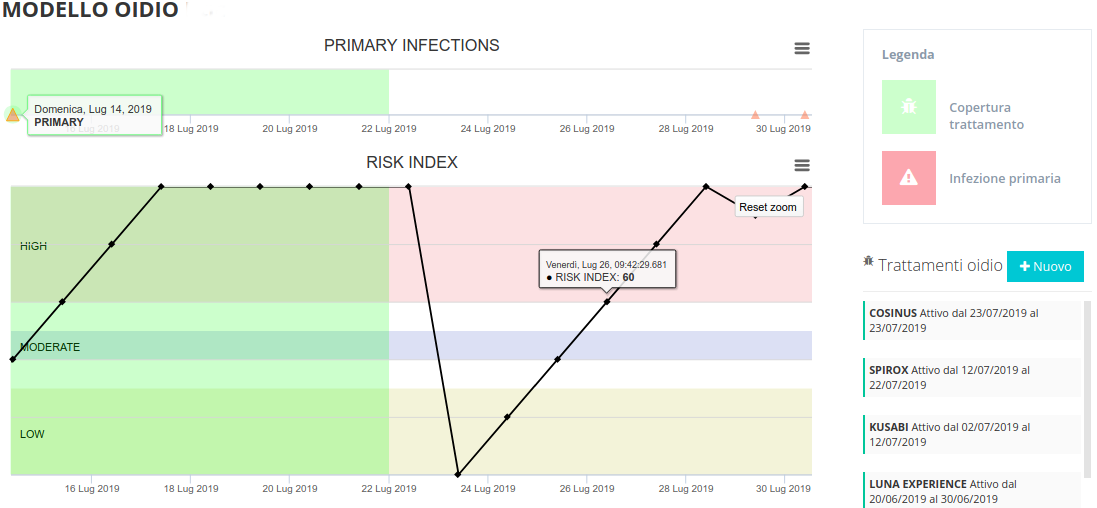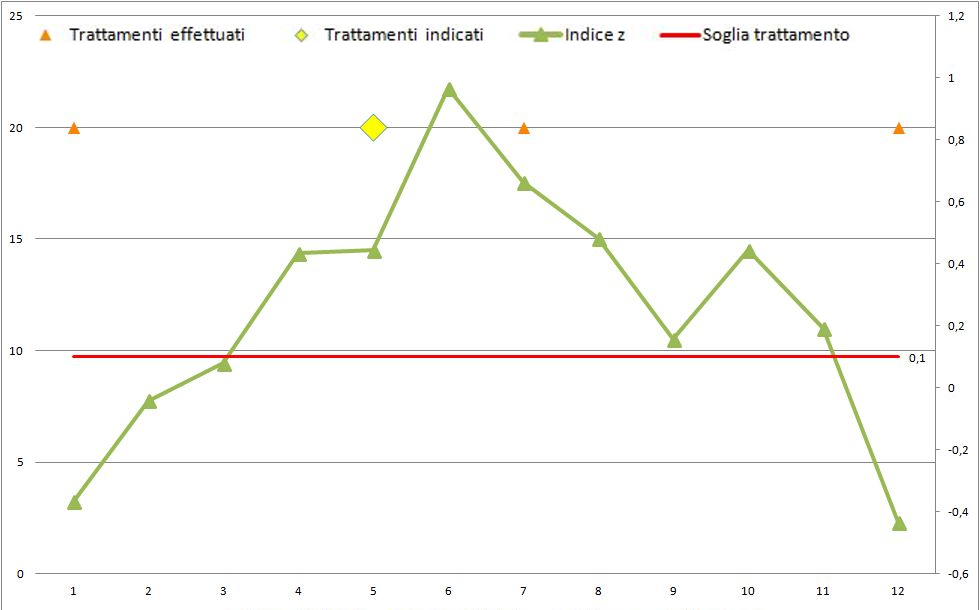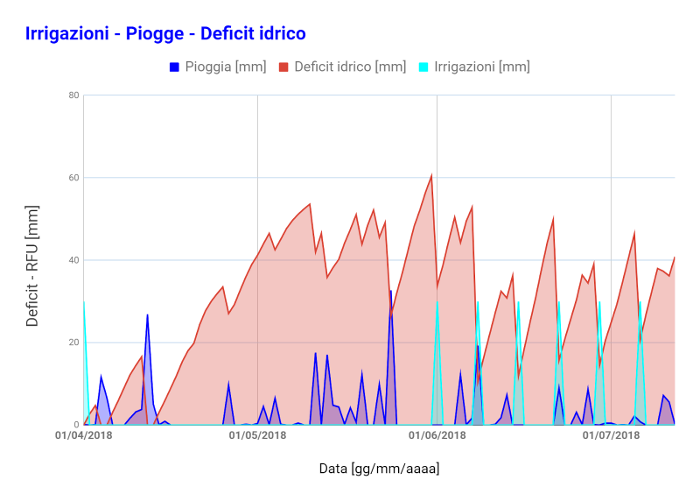Temporal evolution of the level of risk relating to primary infections, with identification of the different stages of evolution of the fungus: germination phase of the soil oospores (sporangia formation), release of the zoospores from the sporangia, dispersion of the zoospores on the leaves and on the branches of the vines, infection of the leaf blades by the zoospores (date of primary infection), incubation period (period of formation of oil spots on the leaves).
Dates of secondary infections, identified as starting dates of infectious sporulations.
